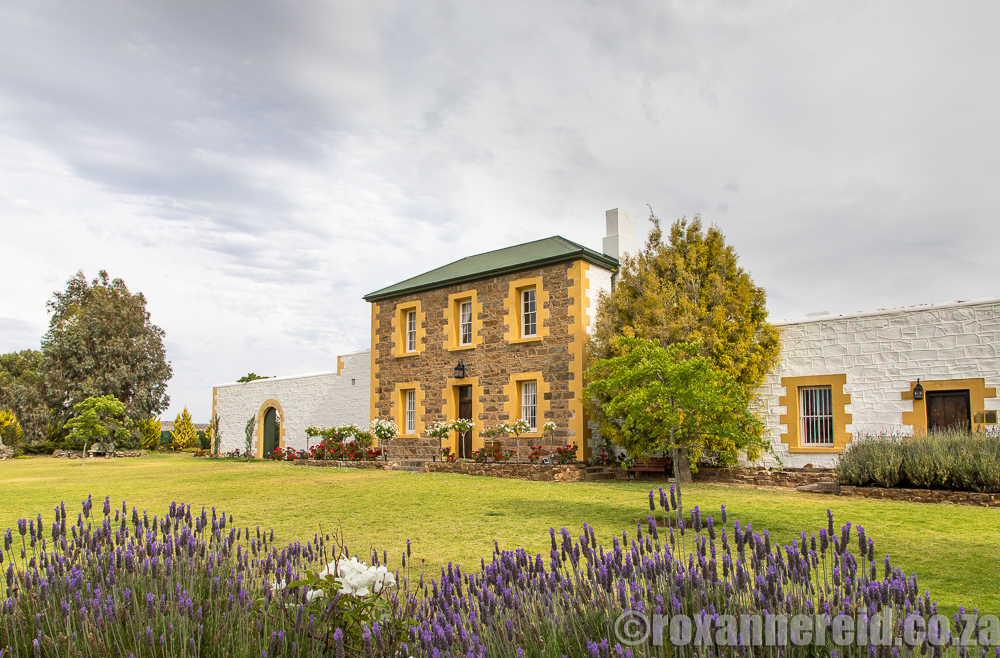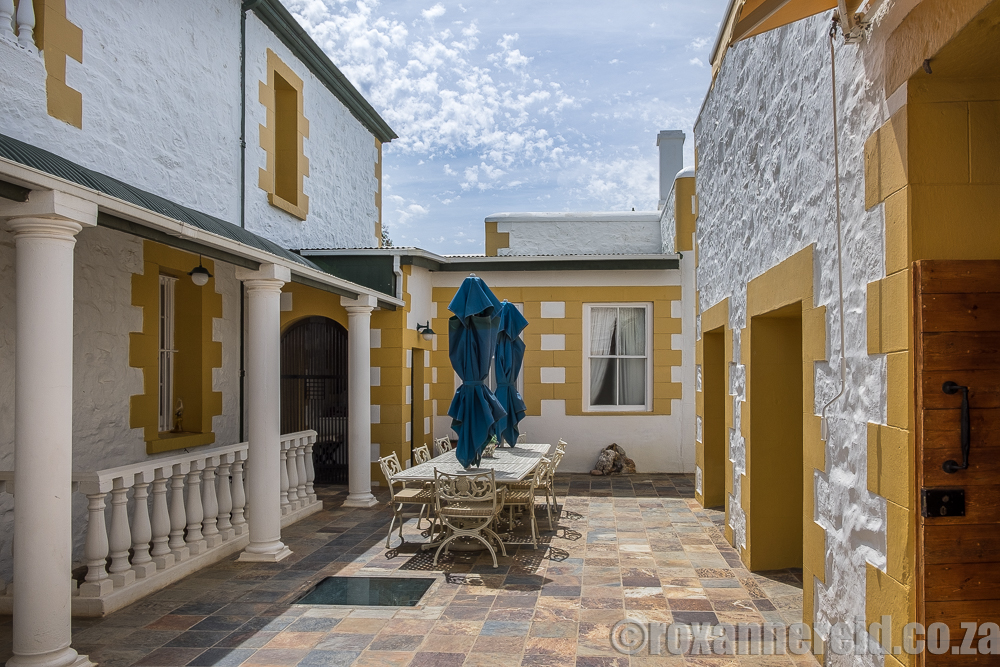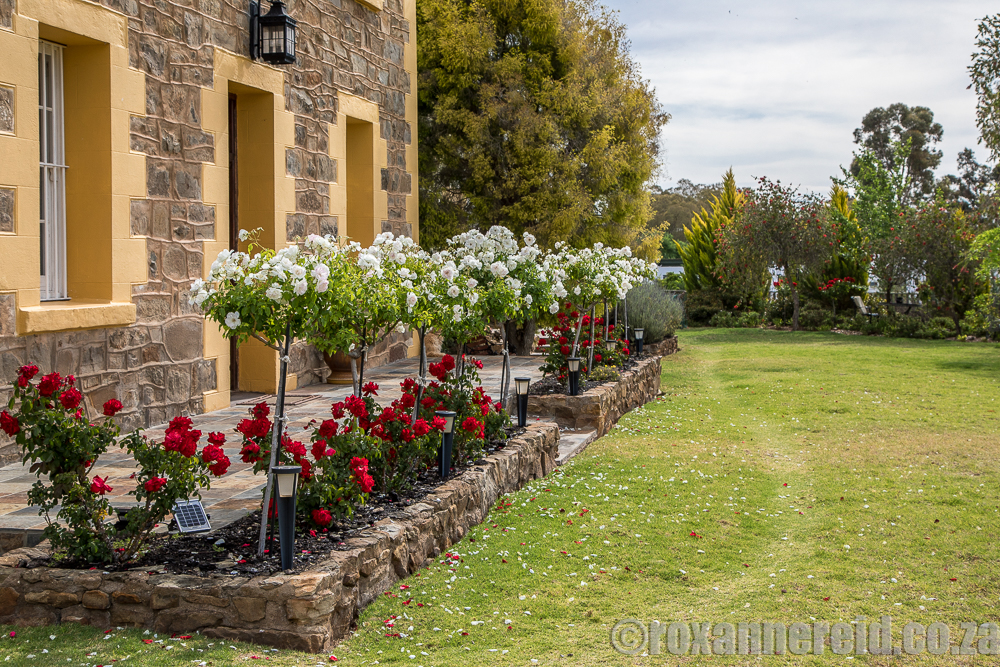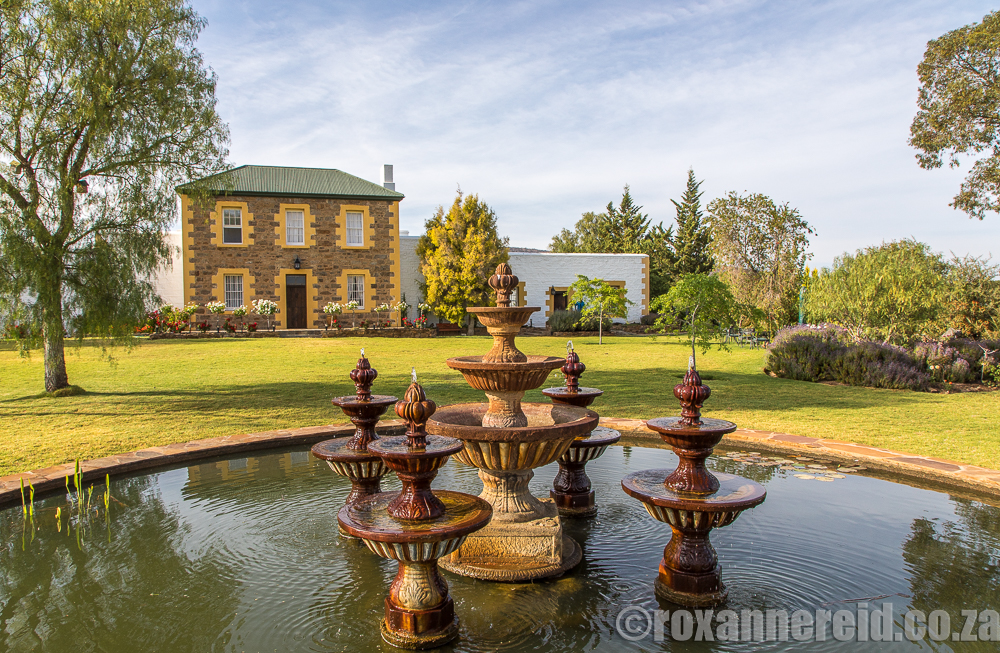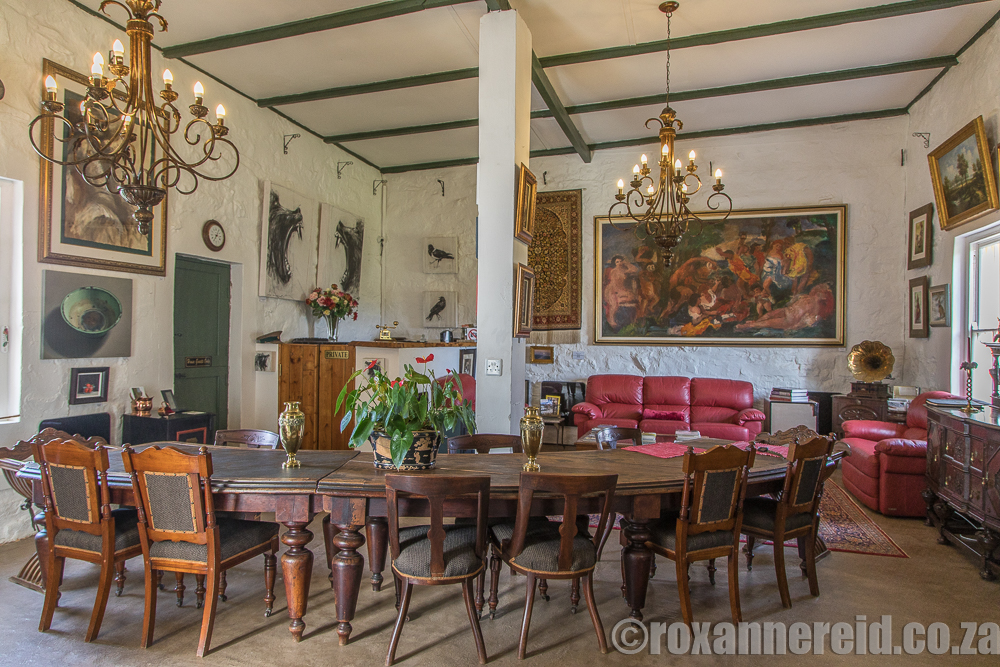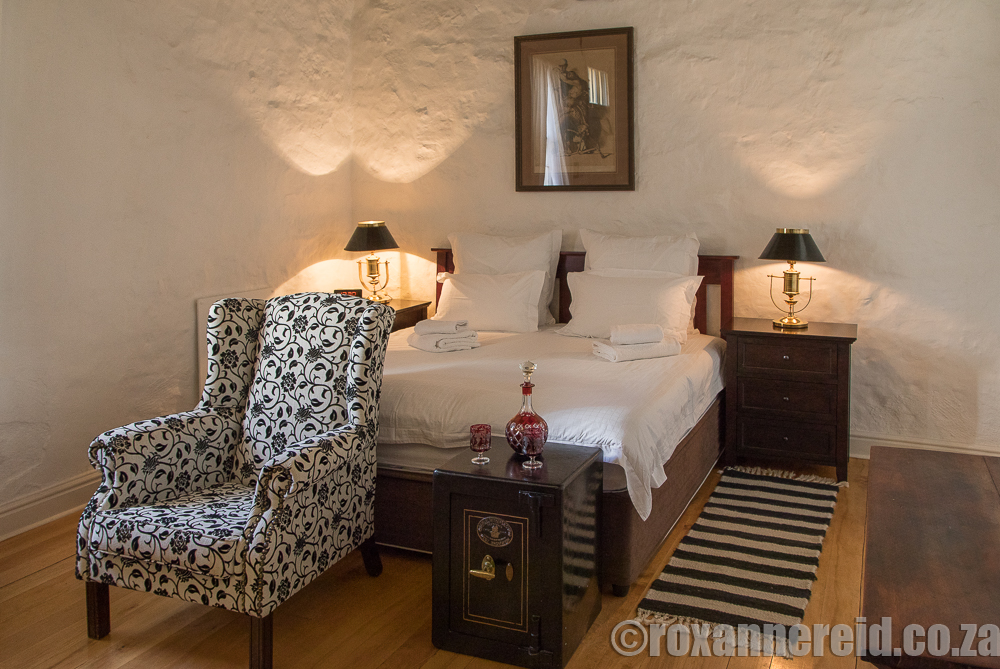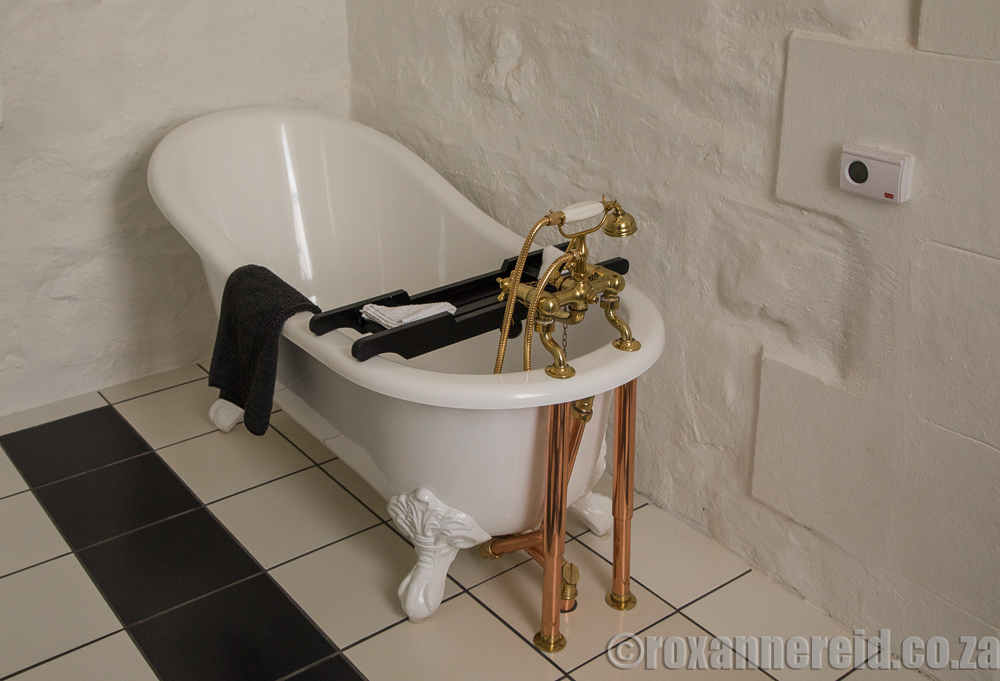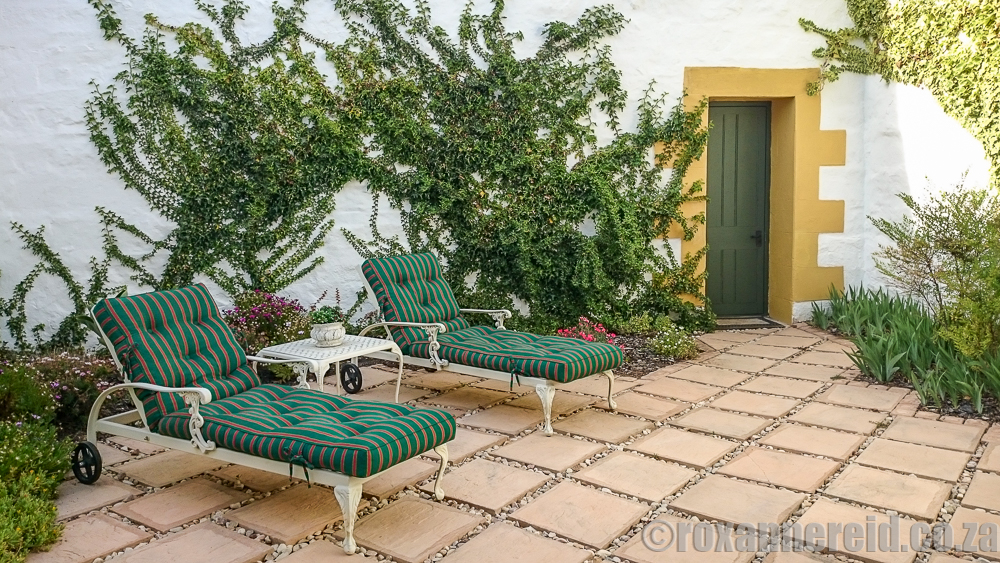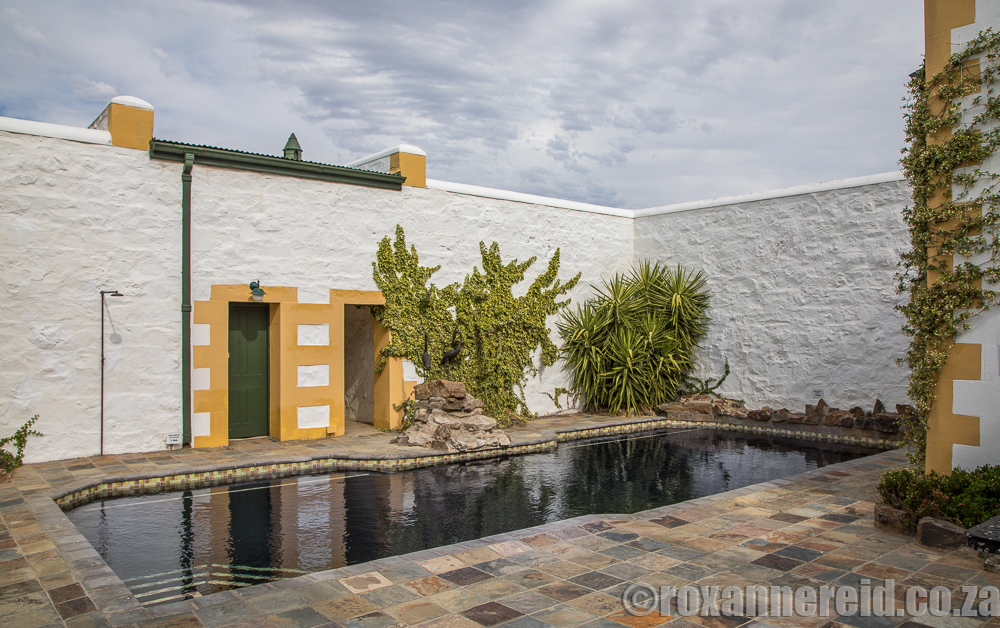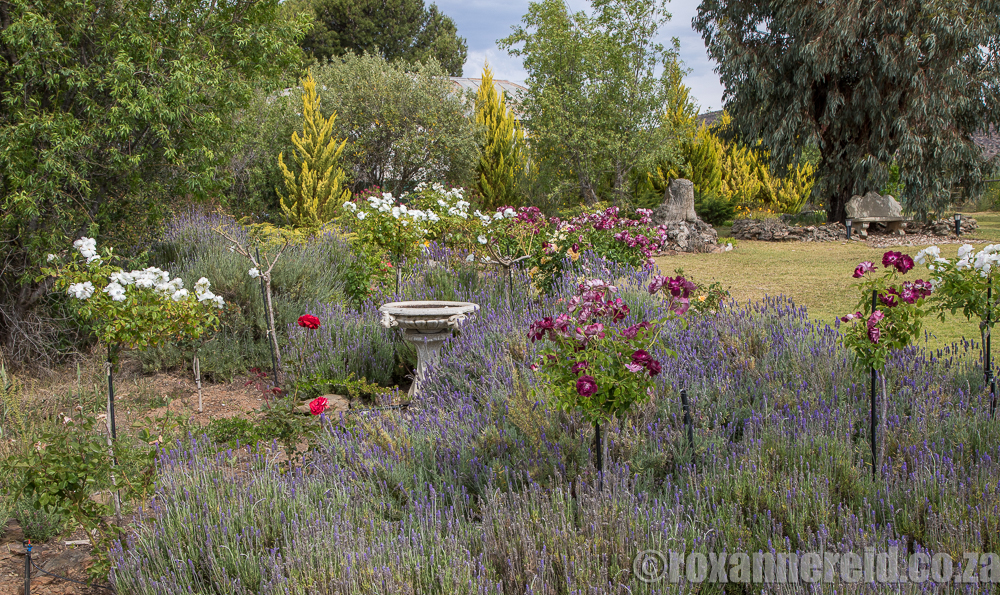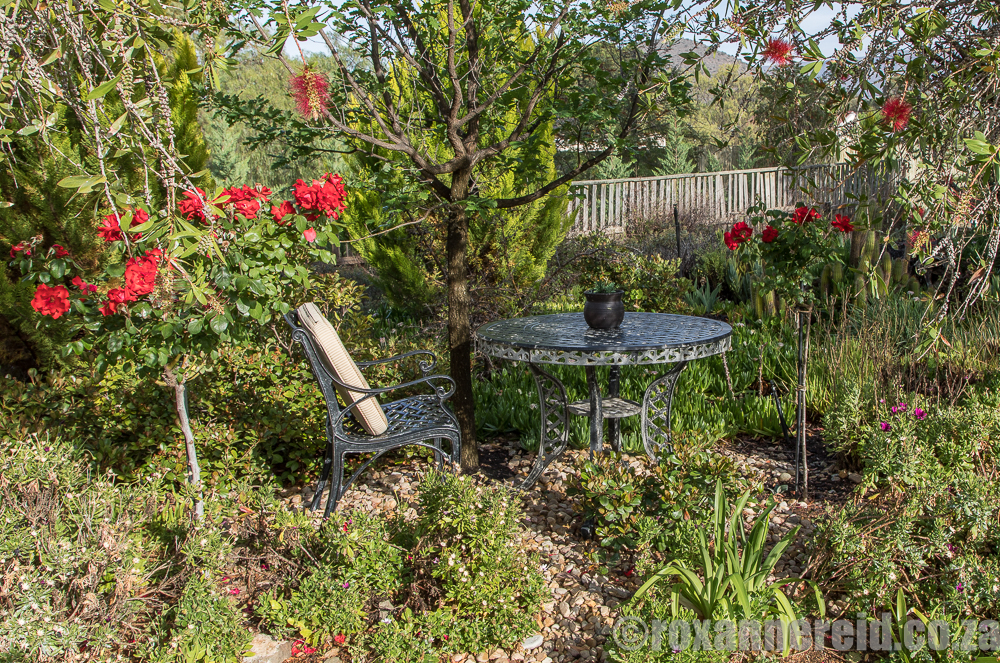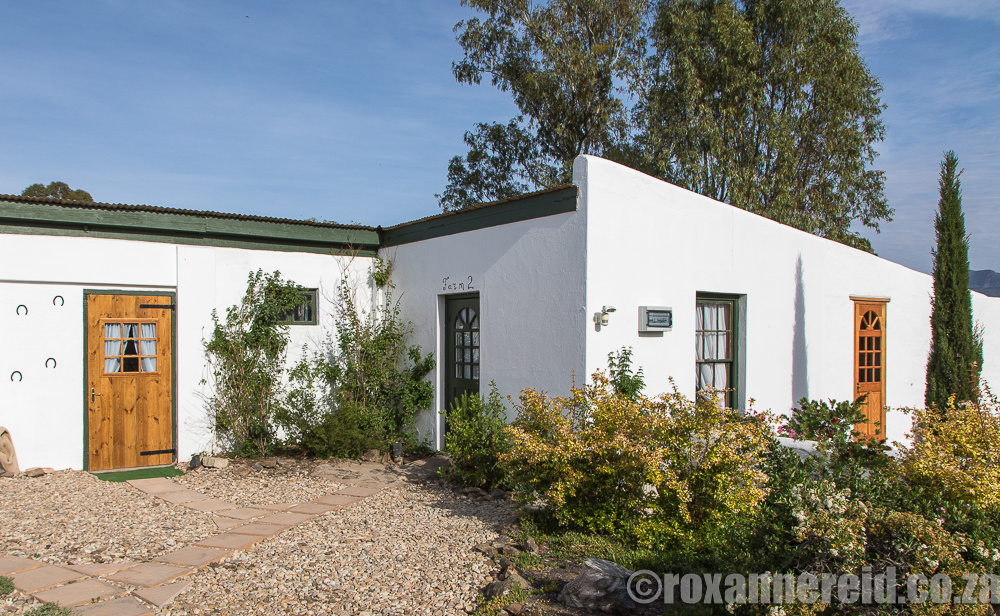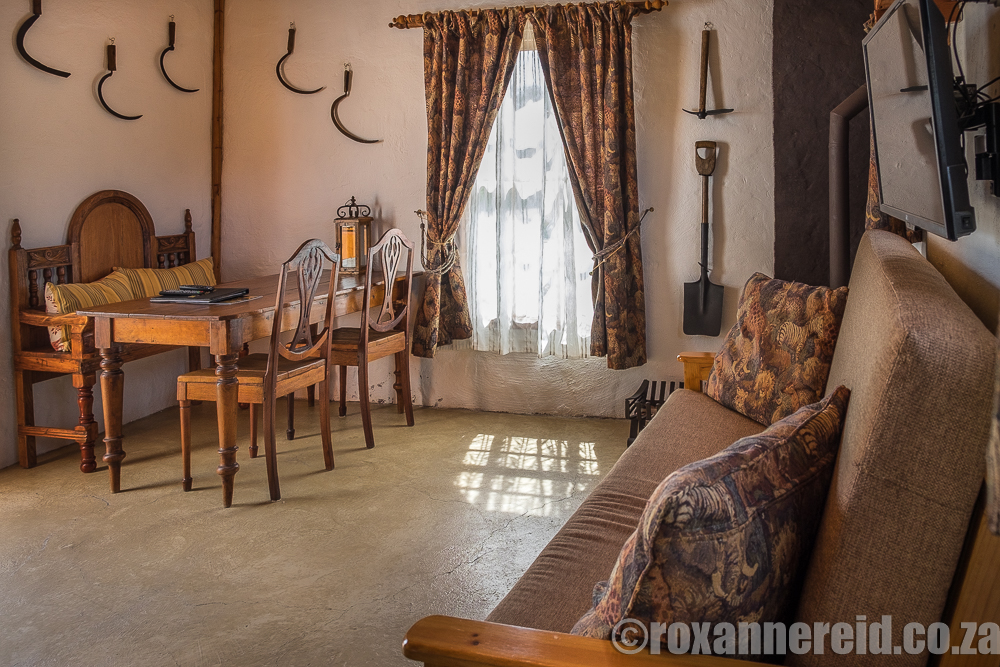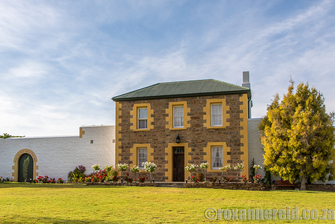
By Roxanne Reid
Staying in quirky, different places is always a kick, whether it’s in a tree house or a cave, on a train or a houseboat. So imagine my thrill when I got to spend a night in jail at Willowmore in the Karoo and uncovered fascinating old stories of darkness and rebellion, of a prison warden who turned to crime.
Staying in quirky, different places is always a kick, whether it’s in a tree house or a cave, on a train or a houseboat. So imagine my thrill when I got to spend a night in jail at Willowmore in the Karoo and uncovered fascinating old stories of darkness and rebellion, of a prison warden who turned to crime.
One great reason to visit the little Karoo town of Willowmore is that it’s the western gateway to the Baviaanskloof, a UNESCO World Heritage Site and biodiversity hotspot. Another is to enjoy the lodge called The Old Jail and Art Gallery, which now inhabits a building that had its origins in the 1880s and was the local jail until the 1950s.
The history
Back in the late 19th and early 20th century, the main crimes you’d be committed to jail for around here were stock theft, theft, alcoholism and rape. During the Anglo Boer War of 1899-1902 a good few rebels against the British colonial government – people who lived in the British-ruled Cape Colony but supported the Boers – were also thrown in the clink at Willowmore.
The history
Back in the late 19th and early 20th century, the main crimes you’d be committed to jail for around here were stock theft, theft, alcoholism and rape. During the Anglo Boer War of 1899-1902 a good few rebels against the British colonial government – people who lived in the British-ruled Cape Colony but supported the Boers – were also thrown in the clink at Willowmore.
To ensure that you didn’t escape, the jail was built on rock and had half-metre thick walls made of large blocks of Karoo rock. Back then the architecture may have looked forbidding, but today its Victorian lines with plaster quoins at the corners, windows and doors make it seem strangely elegant for its purpose.
You can uncover some intriguing stories, like one about the warden who took a leaf out of his charges’ book and turned to theft, getting himself locked up in the jail for his sins. Schadenfreude. I can’t help wondering what the other prisoners thought about that.
You can uncover some intriguing stories, like one about the warden who took a leaf out of his charges’ book and turned to theft, getting himself locked up in the jail for his sins. Schadenfreude. I can’t help wondering what the other prisoners thought about that.
Take time to browse through the folder in the art gallery that contains some photocopied documents from the archives. My favourite was the letter from the jail to the government, stating what an ‘honour’ it was to request permission to spend £3.10 on a light to be erected at the entrance. The reason was that the jail was set apart from the village (which has since grown up to its doorstep) and very dark at night so that police coming looking for it at night struggled to find it.
By the mid 20th century Willowmore must have been a peaceful place to live. There were so few prisoners by the 1950s that the jail was closed and sold to a private buyer. It changed hands a few times and when the current owners, Karen and Oleg, bought it in 2010 it had been standing empty for 12 years.
By the mid 20th century Willowmore must have been a peaceful place to live. There were so few prisoners by the 1950s that the jail was closed and sold to a private buyer. It changed hands a few times and when the current owners, Karen and Oleg, bought it in 2010 it had been standing empty for 12 years.
Restoration to a beautiful lodge
Rats, bats and weeds had taken charge of the buildings and grounds. Karen and Oleg had to clean it up, rebuild parts and install plumbing and electricity. Then they began scouring antique shops for appropriate pieces to furnish it. For instance, the large curved table in the gallery where we ate breakfast was originally a court-room jury table. Oleg also collects heavy old safes and they’re dotted around the lodge for use as tables.
Rats, bats and weeds had taken charge of the buildings and grounds. Karen and Oleg had to clean it up, rebuild parts and install plumbing and electricity. Then they began scouring antique shops for appropriate pieces to furnish it. For instance, the large curved table in the gallery where we ate breakfast was originally a court-room jury table. Oleg also collects heavy old safes and they’re dotted around the lodge for use as tables.
Today you have a choice of three suites at The Old Jail, each with its own private courtyard. The heavy wooden door to the courtyard of the women’s cells is the only one without a peephole – evidence of the courtesy paid to women in the old days, even female prisoners. Women also had the privilege of a huge cement bath, whereas the men had to do without.
The wall between two awaiting trial cells has been knocked out to make one larger bedroom, also with its own private courtyard. We stayed in the hospital ‘cell’, which had an old fireplace to warm sick prisoners during cold Karoo winters and is now furnished with dark wood, brocade armchairs and a brass chandelier.
Our en suite bathroom had black-and-white tiles on the floor, a Victorian-style claw-foot bath and shining copper pipes. I loved our courtyard with its comfy loungers where we could enjoy the sunshine or the shade, depending on the time of day.
All three rooms have air conditioners, which was wonderful given that we visited in a heat wave. I couldn’t help thinking how different things must have been in the hot Karoo summers or icy winters back when this was a working jail. The stairs down to the dungeon sent a shiver down my spine.
The central part of the double-storey building that used to house police and wardens is now the owners’ private suite. The hard labour courtyard has a big pool, which also used to be private but has now been opened for guests.
Because the jail is built on rock, it was a mission to establish the lovely gardens. ‘We had to dig a 1m by 1m hole for each rosebush, shrub and tree using a jackhammer,’ says Karen. ‘Then we trucked in about 80 tons of compost to give them a good start.’ Looking at the green grass surrounding the central fountain, the beautiful roses and trees, it’s hard to imagine that the garden lies on inhospitable Karoo rock.
Self-catering rooms
In 2014 the old stables were converted into two self-catering suites for families and a budget room called the Donkey Room (after a painting of a donkey above the bed). ‘These self-catering rooms are most popular with South Africans, but Europeans prefer the B&B suites in the main lodge for the historical aspect,’ says Karen.
In 2014 the old stables were converted into two self-catering suites for families and a budget room called the Donkey Room (after a painting of a donkey above the bed). ‘These self-catering rooms are most popular with South Africans, but Europeans prefer the B&B suites in the main lodge for the historical aspect,’ says Karen.
Lovely as the self-catering suites are, I’m with the Europeans on this. I love nothing more than taking a peek into the past in historical buildings. And of course there’s the weird appeal of being able to say I’ve spent a night in jail.
Note: I was a guest of The Old Jail for one night but the opinions are mine.
You may also enjoy
10 things to do in the Karoo town of Willowmore
Copyright © Roxanne Reid - No words or photographs on this site may be used without permission from roxannereid.co.za
Note: I was a guest of The Old Jail for one night but the opinions are mine.
You may also enjoy
10 things to do in the Karoo town of Willowmore
Copyright © Roxanne Reid - No words or photographs on this site may be used without permission from roxannereid.co.za
